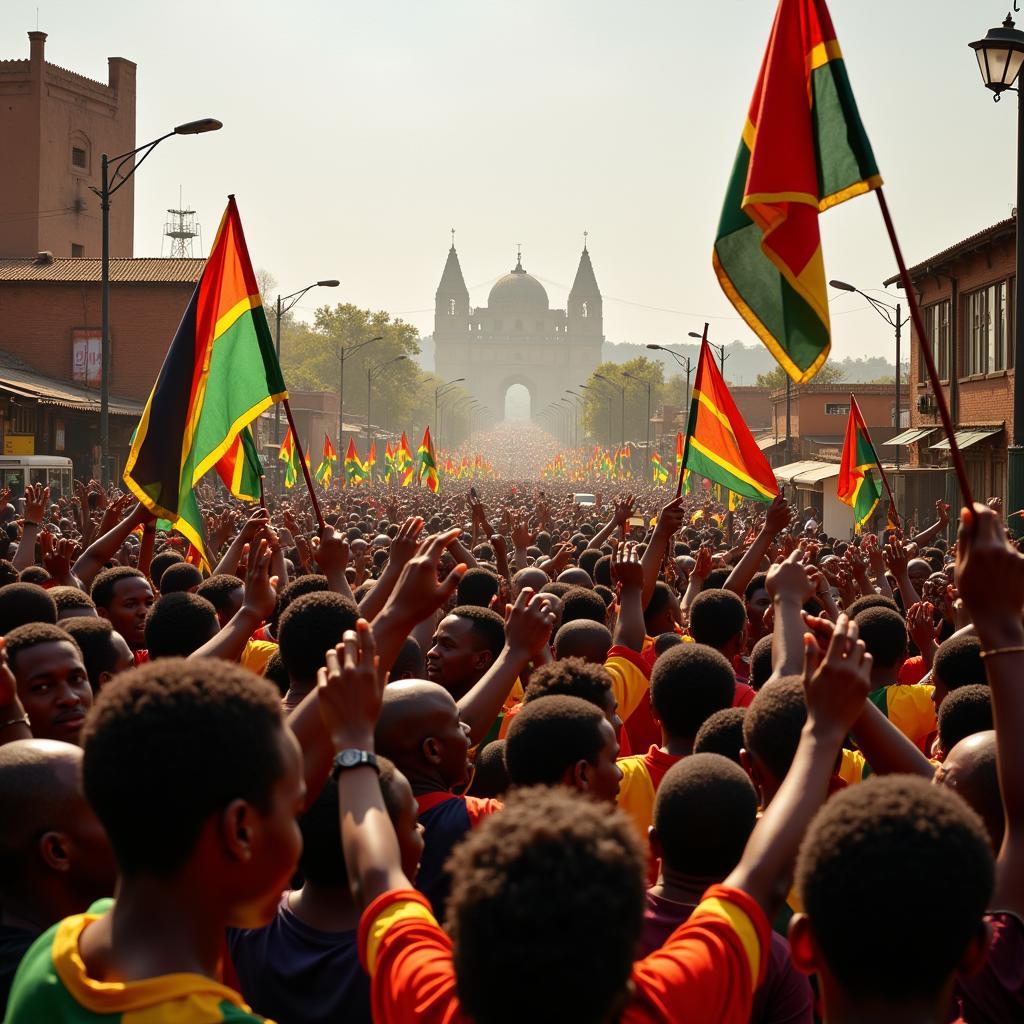A Timeline of African Independence Movements
The struggle for African independence from colonial rule was a long and arduous journey, spanning decades and involving diverse actors, ideologies, and strategies. The “African Independence Movements Timeline” offers a glimpse into this complex historical process, marked by both triumphs and challenges. This period of decolonization reshaped the political landscape of the continent and had a profound impact on the global order.
Early Resistance and the Seeds of Nationalism
While the “African independence movements timeline” often focuses on the post-World War II era, it is crucial to acknowledge the earlier forms of resistance that laid the groundwork for later liberation struggles. From the late 19th century, various communities across Africa rose up against European encroachment, often led by traditional leaders and spiritual figures. These early movements, though ultimately suppressed, demonstrated the inherent desire for self-determination and sowed the seeds of anti-colonial sentiment.
The Winds of Change: Post-World War II Era
World War II served as a major catalyst for African independence movements. The war weakened European powers, both economically and ideologically, making it increasingly difficult to maintain their colonial possessions. Moreover, the war exposed the hypocrisy of colonial rule, with African soldiers fighting for freedom abroad while being denied basic rights at home. The Atlantic Charter of 1941, which emphasized the right of all people to self-determination, further fueled the flames of nationalism across the continent.
The rise of Pan-Africanism, a movement advocating for the solidarity and liberation of people of African descent worldwide, also played a pivotal role. Figures like Kwame Nkrumah of Ghana and Jomo Kenyatta of Kenya emerged as prominent voices, demanding an end to colonial exploitation and calling for African unity.
The Tide Turns: The 1950s and 1960s
The 1950s and 1960s witnessed a wave of African nations achieving independence. Ghana, formerly the Gold Coast, led the way in 1957 under the leadership of Kwame Nkrumah, becoming a beacon of hope for other colonized nations. This event marked a turning point, inspiring a domino effect across the continent.
 Independence Celebrations in an African Nation
Independence Celebrations in an African Nation
Guinea declared independence in 1958, followed by a cascade of nations throughout the 1960s. Each struggle for independence had its own unique trajectory, shaped by internal dynamics and the nature of colonial resistance. Some transitions were peaceful, achieved through negotiations and gradual handover of power, while others involved protracted armed struggles.
Diverse Paths to Independence
The methods employed by African independence movements varied considerably. Some, like the Algerian National Liberation Front (FLN), engaged in protracted armed struggles against their colonizers. Others, such as Julius Nyerere’s Tanganyika National Union (TANU), opted for non-violent resistance and diplomatic pressure. This diversity of approaches reflects the complexities of the African experience and the absence of a singular narrative.
Challenges of Nation-Building
While independence marked a significant victory, it also brought about new challenges. Many newly independent nations grappled with the task of nation-building, often inheriting artificial colonial borders and fragile political systems. The legacy of colonialism, including economic exploitation, social inequalities, and ethnic divisions, continued to cast a long shadow.
The struggle for true liberation, encompassing economic emancipation, social justice, and political stability, continues to this day. Nevertheless, the “African independence movements timeline” stands as a testament to the resilience, determination, and unwavering spirit of the African people in their quest for self-determination.
FAQ
1. What were the main factors contributing to the rise of African independence movements?
Several factors fueled the rise of African independence movements, including the weakening of European powers after World War II, the rise of Pan-Africanism, and the increasing awareness of colonial injustices.
2. Which African country was the first to gain independence from colonial rule?
Ghana, formerly known as the Gold Coast, was the first sub-Saharan African country to gain independence from British rule on March 6, 1957.
3. Were all African independence movements peaceful?
No, while some transitions were peaceful, others involved armed struggles, reflecting the diverse paths to independence across the continent.
4. What were some of the challenges faced by newly independent African nations?
Newly independent nations faced numerous challenges, including nation-building, overcoming colonial legacies of economic dependence and ethnic divisions, and establishing stable political systems.
5. What is the significance of studying the “African independence movements timeline” today?
Understanding this period is crucial for comprehending contemporary Africa, its political landscape, and its place in the world. It also offers valuable lessons about the ongoing fight against all forms of oppression and the pursuit of self-determination.
You Might Also Be Interested In
- African democratic change logo
- African independence date map
- African independence
- African countries and independence dates
- African female activists
Need more information about African history? Contact us at:
Phone: +255768904061, Email: kaka.mag@gmail.com
Or visit us at: Mbarali DC Mawindi, Kangaga, Tanzania.
We are available 24/7 to assist you.



